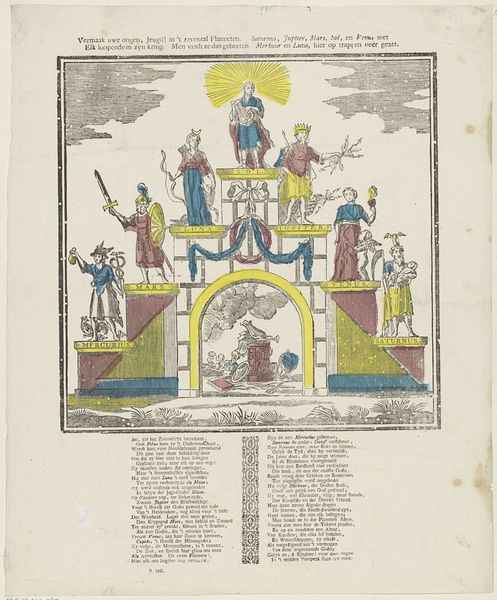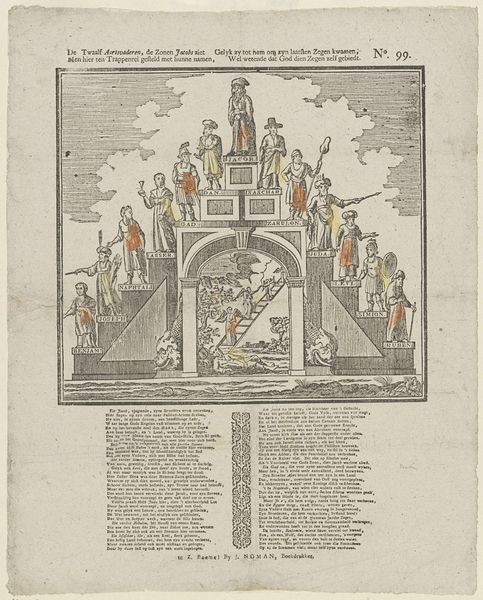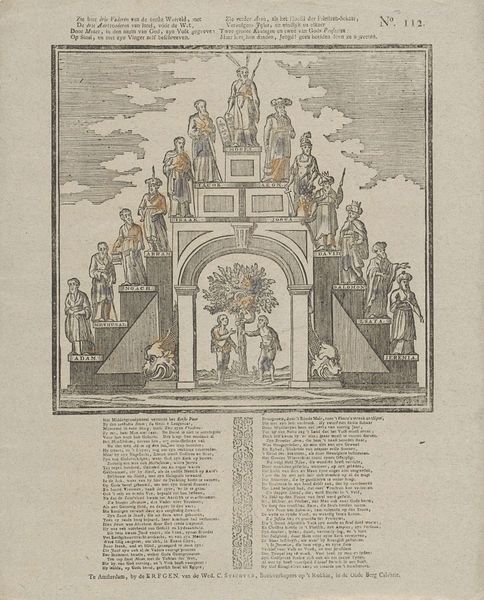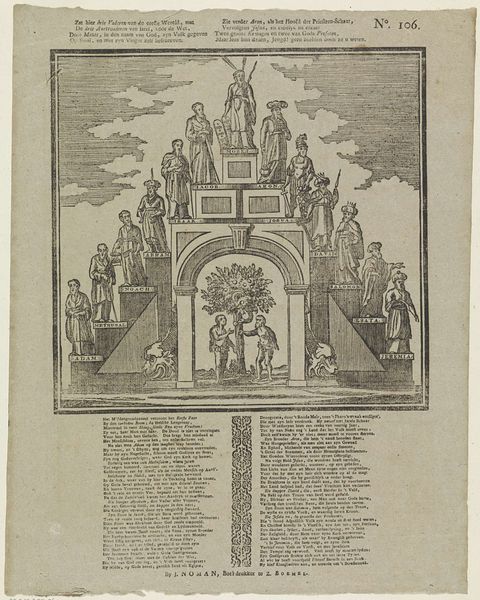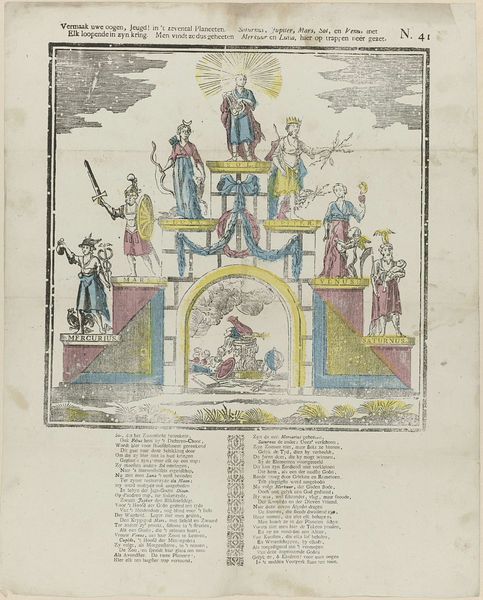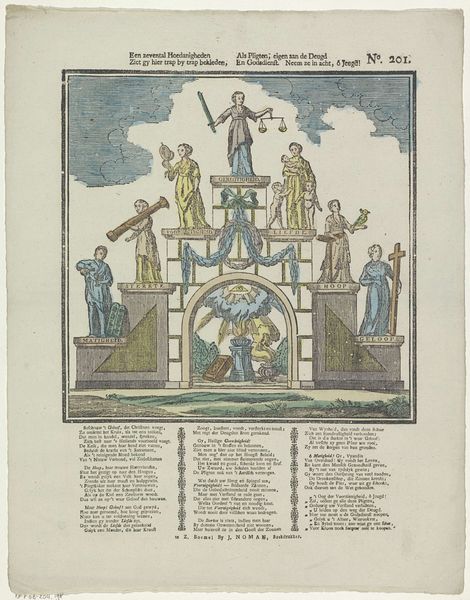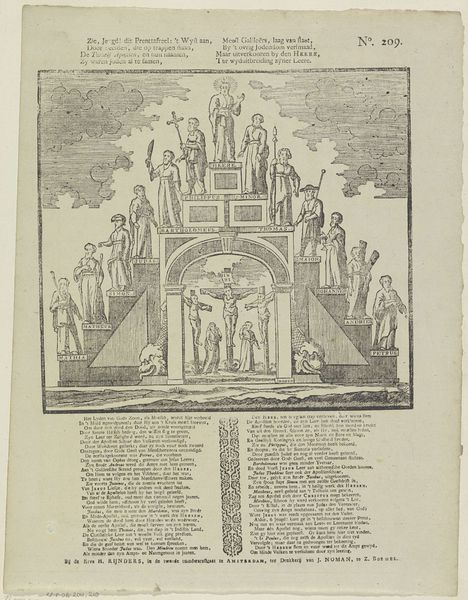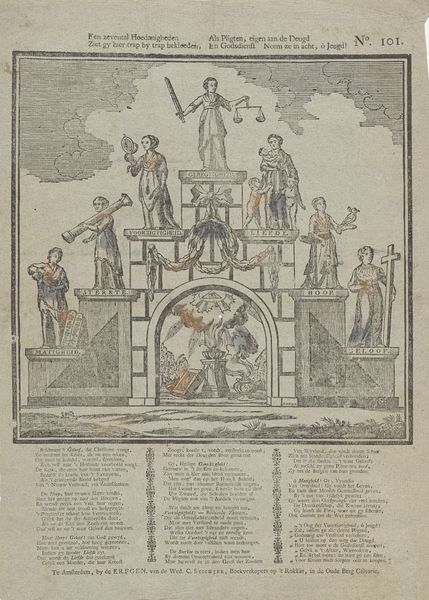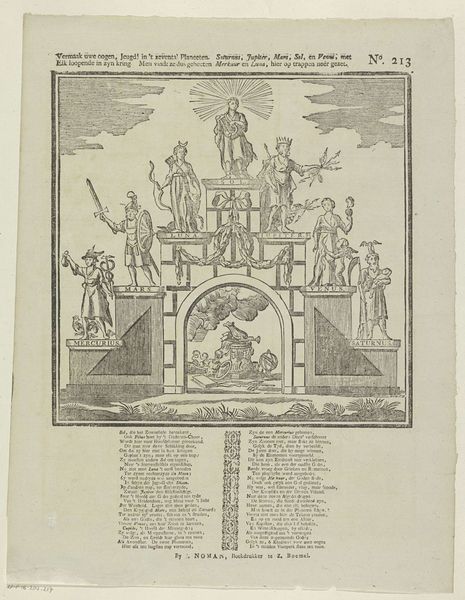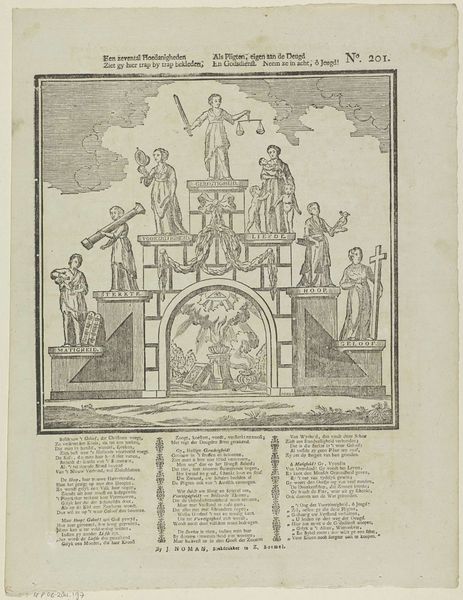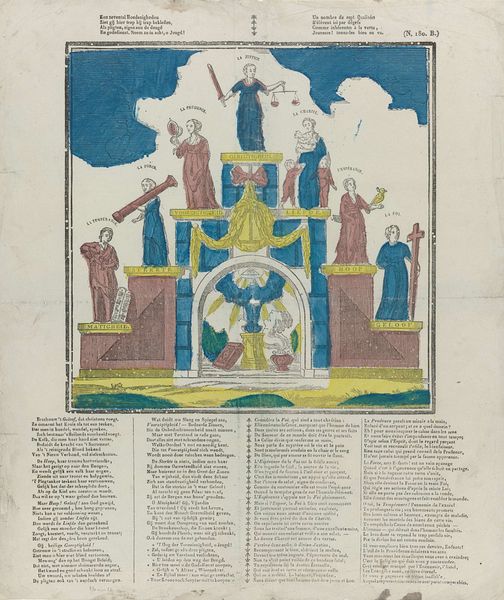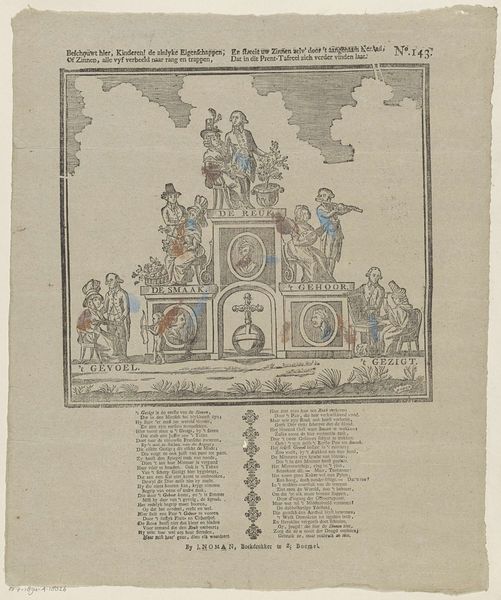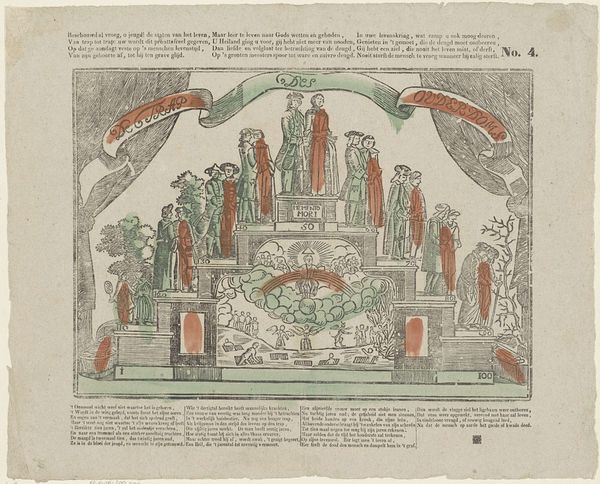
De twaalf aartsvaderen, de zonen Jacobs ziet / Men hier ten trappenrei gesteld met hunnen namen, / Gelyk zy tot hem om zyn laatsten zegen kwamen, / Wel wetende dat God dien zegen zelf gebiedt 1806 - 1830
0:00
0:00
print, engraving
# print
#
figuration
#
romanticism
#
history-painting
#
engraving
Dimensions: height 408 mm, width 326 mm
Copyright: Rijks Museum: Open Domain
Curator: I'm immediately struck by the theatrical staging of this engraving, with its tiered platform displaying figures in these simple robes... it almost feels like folk art meets the biblical epic. What are your thoughts? Editor: This is "The Twelve Patriarchs, the Sons of Jacob" by Johan Noman, created sometime between 1806 and 1830. The staging, as you call it, has specific social meaning; look closely and you’ll see it evokes a rigid social hierarchy of the time, presenting a very particular order within a religious narrative. It echoes how power was structured in early 19th-century society. Curator: That's a fantastic point. I’m getting a definite sense of Romanticism in how Noman portrays these figures – almost idealised. There is also this sort of dreamlike vision happening in the centre, where figures appear climbing a ladder that recalls Jacob’s dream. What an ingenious touch! Editor: Exactly, and consider the broader history of representation and the artist’s position within this narrative. Noman is choosing to depict a foundational moment from the Old Testament at a time of immense socio-political change. How do you see that moment reflected in this particular composition? Who has the most access to divinity here? Where are those access points on this so called "ladder of power" reflected for various patriarchal leaders. Curator: Well, you have Jacob, literally elevated, standing above all of his sons, while the depiction of Jacob's Ladder creates a spiritual undercurrent. But, truthfully, the ladder itself is so minute within the context of such immense stage presence, that is feels a tad dwarfed and disconnected. Still, this whole design pulses with symbolic possibility, does it not? Editor: Absolutely. From an intersectional perspective, the limited roles and representations assigned to women of this historical period stand in stark contrast to these displays of patriarchal strength, don't you think? It’s necessary to consider those exclusions to contextualise a work like this. Curator: Indeed. This image feels so anchored in a very particular time with such pointed intentions. It provides much for a pondering spirit! Editor: Definitely! It serves as a powerful reminder to critically examine what stories and values are memorialized through art.
Comments
No comments
Be the first to comment and join the conversation on the ultimate creative platform.
